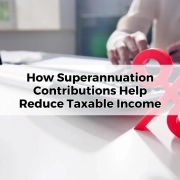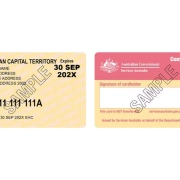How to Use Financial Modelling for Retirement Planning?
Table of Contents
ToggleRetirement planning is no longer a vague aspiration tied to age. It’s a complex, multifaceted financial exercise requiring precision, strategy, and foresight. Financial modelling brings clarity to this process, allowing individuals to visualise their financial future and make informed decisions. Whether assessing superannuation sufficiency or estimating healthcare costs, modelling enables scenario testing and strategic adaptability. As a Toowoomba Financial Adviser, leveraging this technique forms the backbone of Retirement Financial Advice tailored to
individual aspirations and constraints.
What is Financial Modelling in a Retirement Context?
Financial modelling refers to the creation of a structured mathematical representation of a person’s financial situation over time. In the context of retirement planning, it incorporates income sources, expenditure projections, tax implications, investment growth, inflation, and life expectancy. Unlike basic budgeting, financial modelling allows dynamic interaction of variables, providing a realistic, forward-looking view. It turns qualitative retirement goals into quantifiable financial metrics and enables regular recalibration based on lifestyle changes or economic shifts.
Why Financial Modelling is Essential for Effective Retirement Planning
Retirement without a robust plan is akin to sailing without a compass. Financial modelling addresses this risk by offering a roadmap grounded in numbers. It helps pre-retirees answer critical questions—How long will their super last? What standard of living is affordable? What age can they realistically retire? For clients receiving Financial Planning in Toowoomba,
modelling provides tailored clarity, avoiding guesswork and minimising the risk of underfunding or over-reliance on government benefits.
Key Elements Incorporated in Retirement Financial Models
A comprehensive retirement financial model includes multiple variables. Firstly, projected income streams such as superannuation, pensions, rental income, and investments. Secondly, expenses segmented by needs, wants, and health contingencies. Thirdly, life expectancy projections based on personal and family health history. The model also integrates inflation forecasts, aged care provisions, Centrelink entitlements, and tax strategy. These variables allow for realistic, adaptable, and stress-tested financial forecasts.
Understanding Retirement Income Streams in Modelling
A strong model distinguishes between guaranteed income (like Age Pension or defined benefit pensions) and variable income (such as dividends, rent, and drawdowns from super). Modelling quantifies each stream’s reliability and sustainability, ensuring the retiree does not outlive their assets. Strategic withdrawal modelling, particularly within SMSFs, can maximise tax effectiveness while ensuring longevity of funds. For those seeking Retirement Financial Advice, analysing income predictability is crucial to mitigating longevity risk.
Modelling Superannuation Growth and Drawdowns
Superannuation is central to Australian retirement funding. Modelling its accumulation phase involves projecting employer contributions, investment returns, fees, and salary sacrifice arrangements. Post-retirement, it’s about simulating drawdown strategies, ensuring compliance with minimum pension rules and Centrelink asset tests. A well-built model tests multiple scenarios—early retirement, market downturns, and legislative changes—to ensure resilience. Financial Planning in Toowoomba must account for local employment trends and sector-specific
super nuances.
Accounting for Inflation and Lifestyle Adjustments Over Time
One of the most underestimated variables in retirement planning is inflation. Financial modelling adjusts future costs of living to reflect changing purchasing power, ensuring retirement projections remain realistic. This includes escalating healthcare costs, utilities, travel, and leisure expenses. Models must also accommodate lifestyle shifts—downsizing, regional relocation, or changes in family dynamics. For an Online Financial Adviser, tailoring inflation assumptions based on individual geographic and demographic data ensures precision.
Risk Tolerance and Investment Assumptions Within Models
Every financial model must align with the individual’s risk profile. A conservative retiree might favour fixed income and cash products, while a growth-oriented client may embrace equities and property. The model integrates risk tolerance to project realistic returns, balancing capital preservation with income needs. In Toowoomba, Financial Advisers must consider rural property values, agricultural volatility, and market access when constructing such assumptions. Poorly calibrated models lead to underperformance or unnecessary exposure.
Tax Optimisation Through Strategic Modelling
Tax is often the silent eroder of retirement wealth. A good financial model incorporates income tax, superannuation tax, capital gains tax, and franking credits. This enables retirees to withdraw assets in the most tax-effective sequence. For SMSF members, timing pensions and lump sums can result in significant tax arbitrage. Through careful modelling, advisers can reveal opportunities for splitting income with spouses, managing thresholds, and aligning with Centrelink eligibility to preserve benefits.
Stress Testing Retirement Scenarios
Robust retirement planning involves more than one optimistic forecast. Financial modelling stress-tests scenarios such as market downturns, sudden health crises, death of a spouse, and longevity exceeding 100 years. These tests highlight vulnerabilities in a plan and inform strategies like insurance, contingency reserves, or asset reallocations. For Retirement Financial Advice, this process is essential to building durable financial strategies. It ensures retirees remain in control—even in adversity.
Integrating Aged Care Costs and Contingencies
Aged care is a significant and often unexpected expense in later retirement. Modelling these costs requires understanding RADs (Refundable Accommodation Deposits), DAPs (Daily Accommodation Payments), and ongoing care fees. For Toowoomba clients, access to regional aged care services and associated costs must be considered. Incorporating aged care into financial models ensures funds are earmarked, decisions are pre-planned, and family stress is minimised. This is an essential aspect of holistic retirement advice.
Leveraging Modelling to Explore Retirement Timing Flexibility
Retirement is not a fixed date. Financial models allow individuals to assess the impact of retiring earlier or later. They show how delaying retirement affects superannuation growth, Centrelink eligibility, and lifestyle viability. For some, part-time work in early retirement may be desirable, and modelling illustrates its effect on longevity of funds. This level of flexibility and insight is invaluable to clients working with an Online Financial Adviser or engaging in Financial Planning in Toowoomba.
Scenario Planning: Best Case, Worst Case, and Most Likely Case
Scenario planning builds resilience into retirement modelling. The ‘Best Case’ may assume strong market growth and good health, while the ‘Worst Case’ models downturns and major health expenses. The ‘Most Likely Case’ balances realism with aspiration. This triage approach enables clients to see both potential pitfalls and opportunities. For a Toowoomba Financial
Adviser, such insights foster trust and demonstrate due diligence in crafting reliable and adaptable retirement plans.
Reviewing and Updating the Model Over Time
A retirement model is not a one-off exercise—it is a living document. Life events, market changes, and legislative shifts demand regular model reviews. Annual check-ins or life-triggered reviews (such as inheritance, relocation, or illness) are essential. Updating assumptions ensures decisions remain relevant. Clients engaging in ongoing advice relationships, particularly via Online Financial Advisers, benefit from models that evolve with their life journey—keeping them aligned to their goals and financial wellbeing.
Conclusion
Financial modelling provides more than just numbers—it offers peace of mind. It transforms retirement planning from guesswork into a strategic endeavour, grounded in logic and adaptability. For clients seeking Retirement Financial Advice, it empowers them with a clear view of the future, bolstered by contingency plans and tax-effective strategies. Whether you’re working with a Toowoomba Financial Adviser face-to-face or seeking support from an Online Financial Adviser, financial modelling remains the cornerstone of a confident and dignified retirement.









